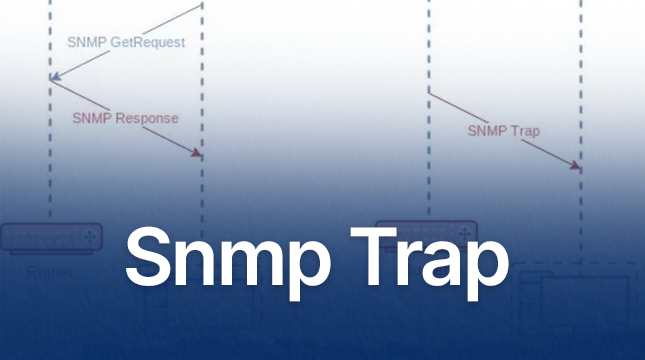The Silent Sentinels Of SNMP Trap

The world of network management can feel like constantly checking on a bustling city. Servers whirring, data flowing, and everything needs to run smoothly. But what if you didn’t have to constantly check every corner? Enter SNMP traps, the silent sentinels of your network, keeping you informed when things go awry.
What is SNMP?
The Simple Network Management Protocol (SNMP) is a widely used protocol for network management. It allows network administrators to manage network performance, find and solve network problems, and plan for network growth. SNMP operates in the application layer of the Internet Protocol Suite, providing a standardized framework for monitoring and managing devices on IP networks.
What is an SNMP trap?
SNMP traps are a crucial aspect of SNMP. They are unsolicited messages sent from an SNMP agent (usually a network device like a router, switch, or server) to an SNMP manager (a software system used to monitor and manage network devices). Unlike SNMP queries involveS the manager requesting information from the agent, traps are initiated by the agent when certain events occur, allowing for real-time alerting and proactive network management.
How Do SNMP Trap Work?
- Configuration: Network devices are configured to monitor certain conditions or thresholds. When these conditions are met, the device generates an SNMP trap.
- Generation: When a specific event occurs (e.g., a threshold is exceeded, a device goes offline, or an error is detected), the agent generates a trap message.
- Transmission: The trap message is sent to the SNMP manager over the network. This message includes information about the event, such as the type of event, the time it occurred, and the current state of the device.
- Reception: The SNMP manager receives the trap and processes it. The manager can then log the event, generate alerts for administrators, or trigger automated responses to address the issue.
Benefits of Using SNMP Trap
- Real-time Alerts: SNMP Traps provide immediate notifications of significant events, enabling network administrators to respond quickly to potential issues.
- Reduced Network Traffic: Since traps are sent only when events occur, they generate less network traffic compared to continuous polling by the SNMP manager.
- Proactive Management: Traps help administrators detect and address problems before they escalate, improving overall network reliability and performance.
- Scalability: SNMP Traps can be used in networks of all sizes, from small office setups to large enterprise environments, making them a versatile tool for network management.
Common Use Cases for SNMP Trap
- Fault Management: Traps can alert administrators to hardware failures, software errors, and other critical issues, allowing for prompt troubleshooting and repair.
- Performance Monitoring: Traps can notify managers when performance metrics (e.g., CPU usage, memory usage, and bandwidth utilization) exceed predefined thresholds, helping to prevent bottlenecks and maintain optimal performance.
- Security: Traps can be configured to detect and report security-related events, such as unauthorized access attempts, configuration changes, or the detection of malware.
- Configuration Management: Traps can alert administrators to changes in device configurations, ensuring that unauthorized or accidental changes are quickly identified and addressed.
Configuring SNMP Trap
Setting up SNMP Traps involves several steps:
- Enable SNMP on Devices: Ensure that SNMP is enabled on all devices that need to send traps. This usually involves configuring the SNMP agent on each device.
- Define Trap Destinations: Specify the IP address of the SNMP manager that will receive the traps. This is often done through the device’s management interface or configuration files.
- Set Trap Conditions: Define the specific events or thresholds that will trigger traps. This can include hardware failures, performance metrics, or security events.
- Test and Monitor: Regularly test the configuration to ensure that traps are being sent and received correctly. Monitor the system to fine-tune settings and ensure that important events are captured.
Conclusion
SNMP Traps are an essential feature of network management, providing real-time alerts and reducing the need for continuous polling. By understanding and properly configuring SNMP Traps, network administrators can ensure timely responses to network events, improve performance, and enhance security. Whether you’re managing a small network or a large enterprise environment, it can help you maintain a reliable and efficient network infrastructure.

Let's Start Your Project
Get free consultation for your digital product idea to turn it into reality!
Get Started








